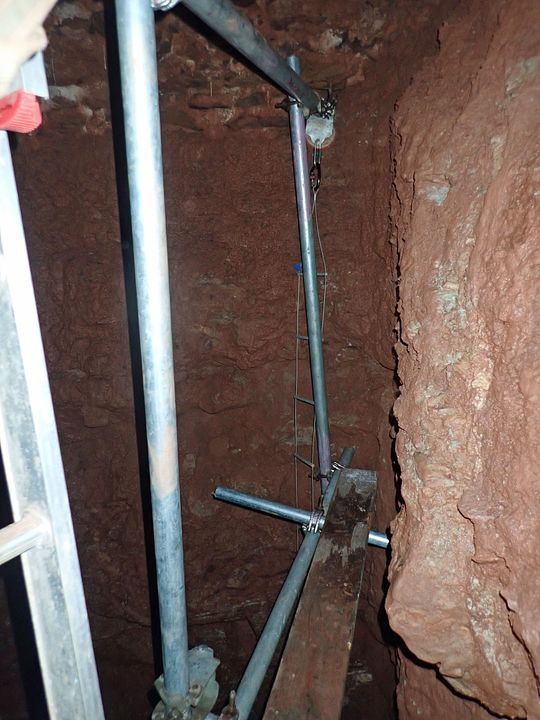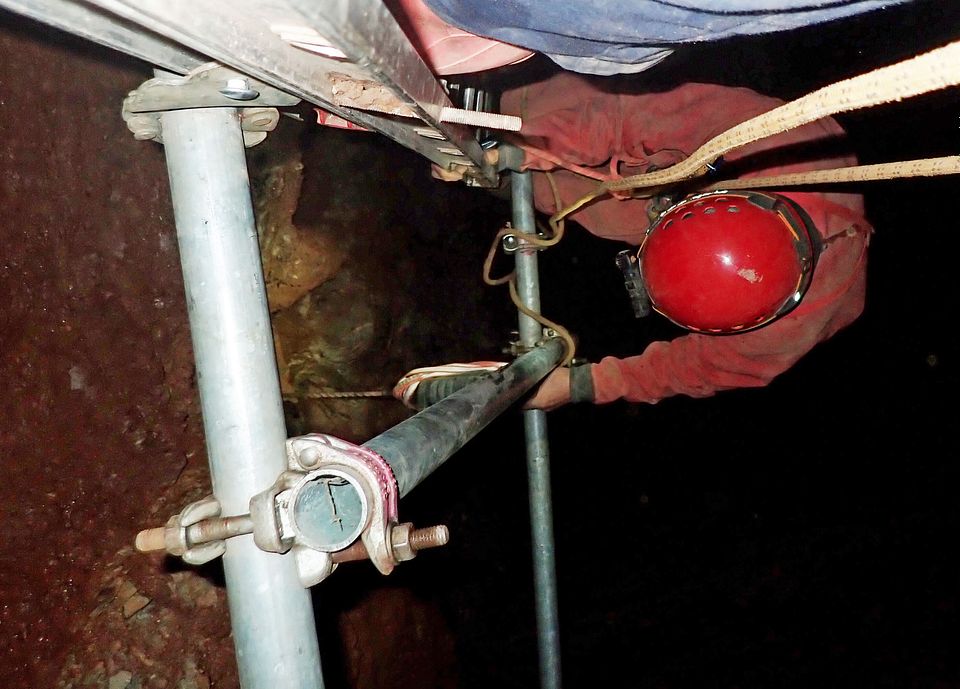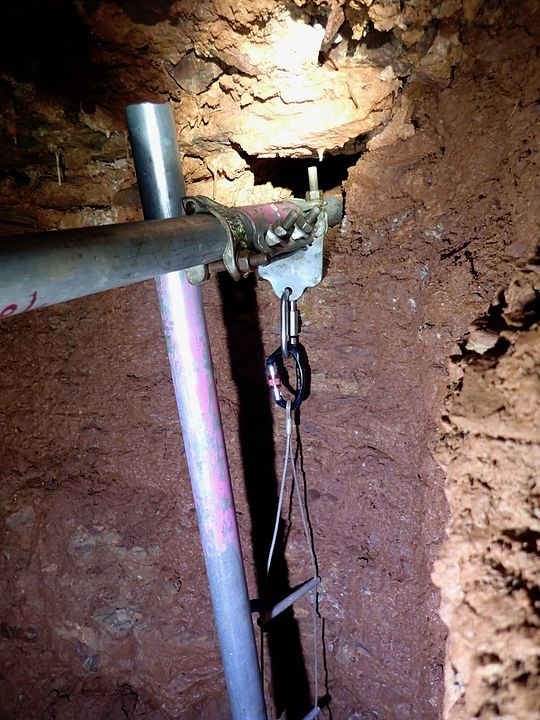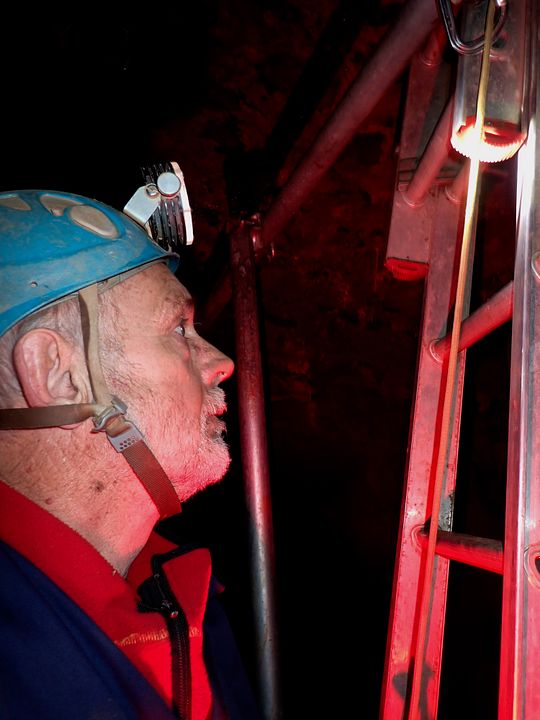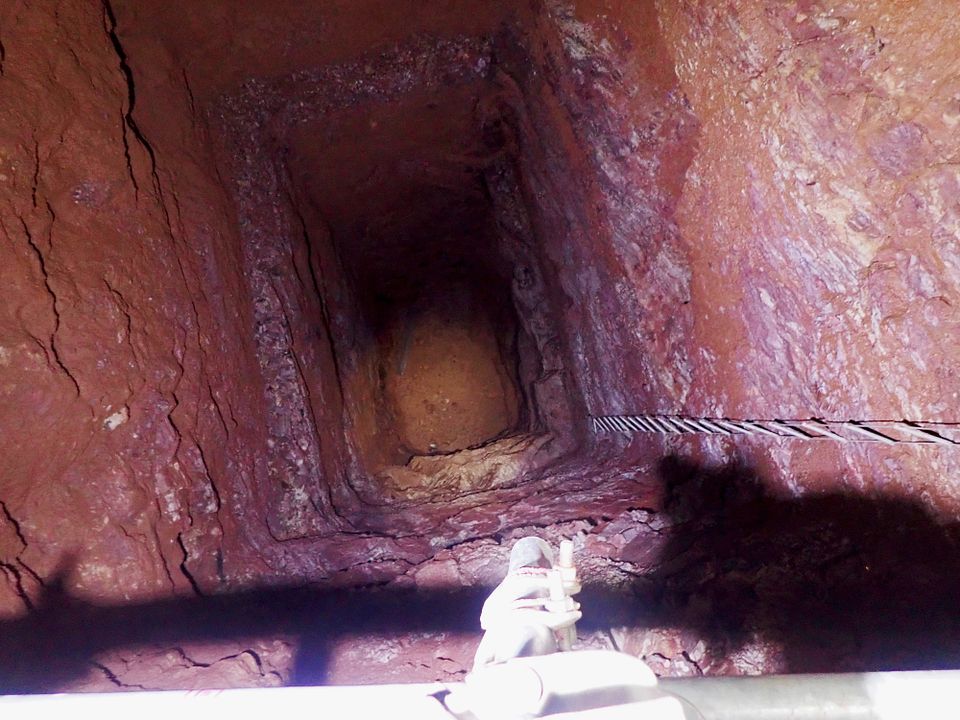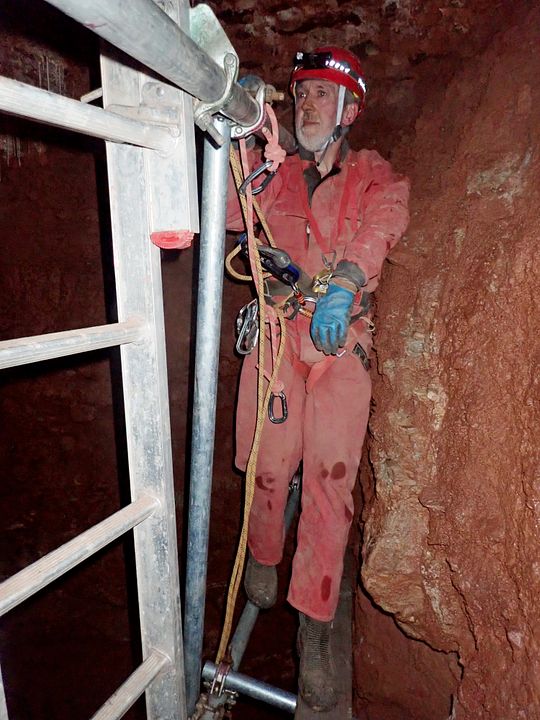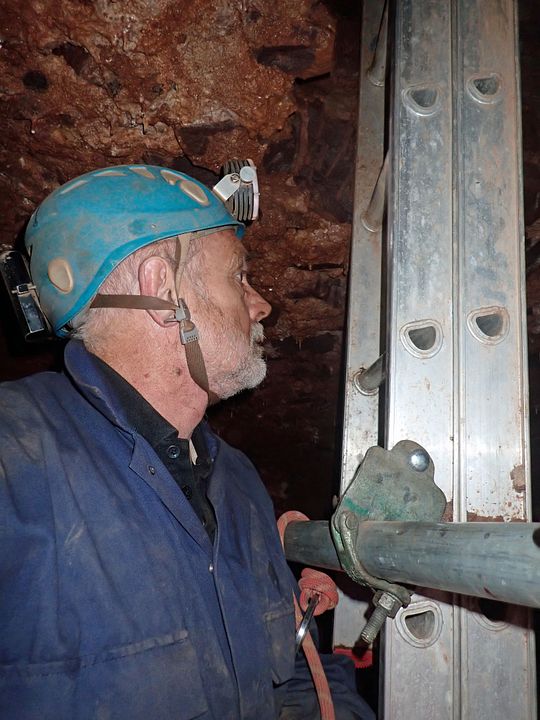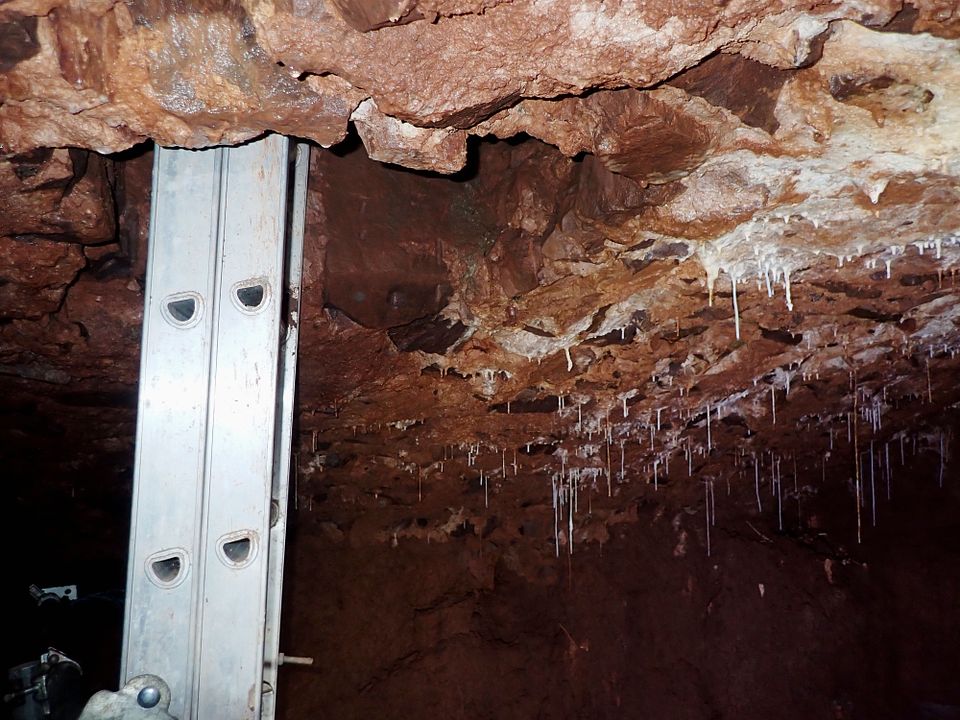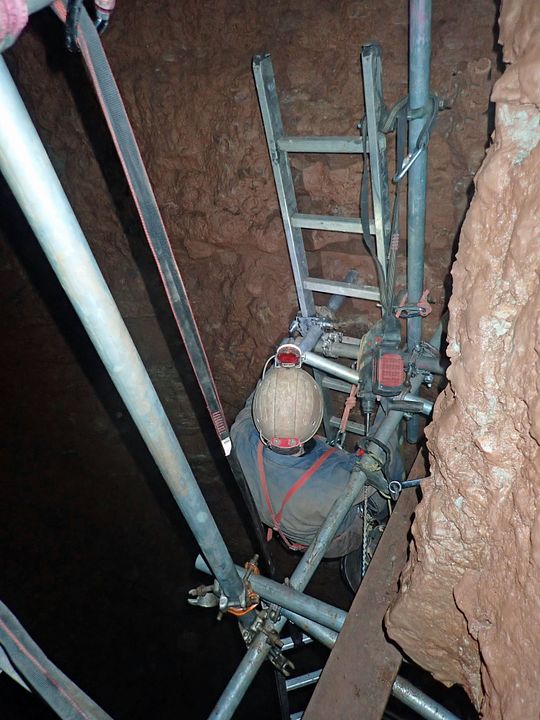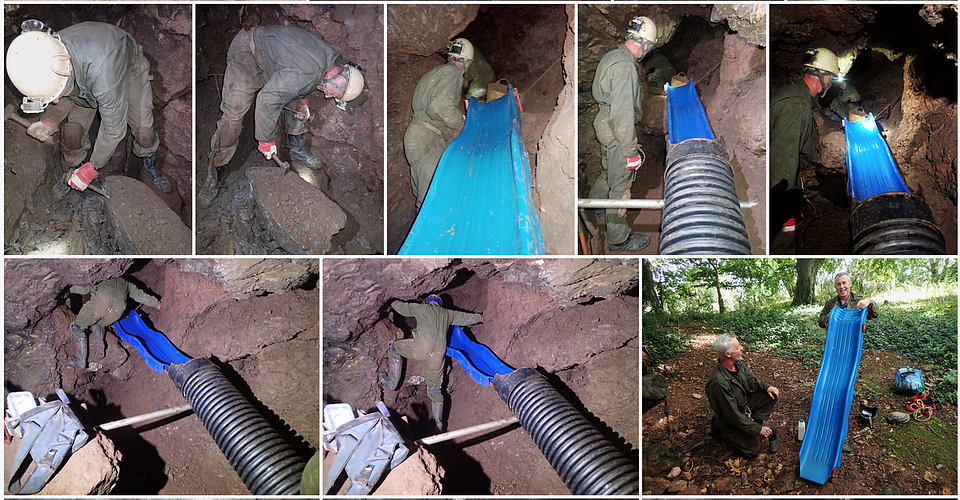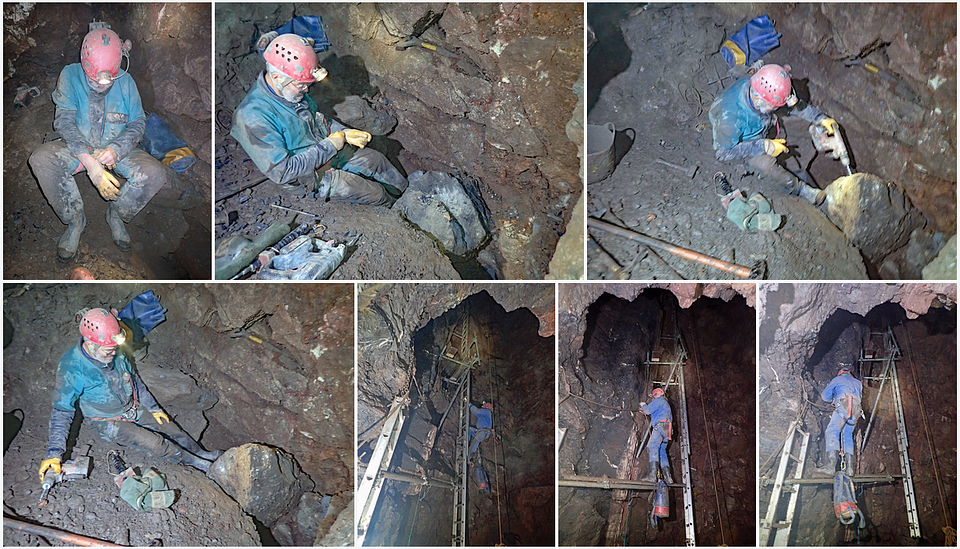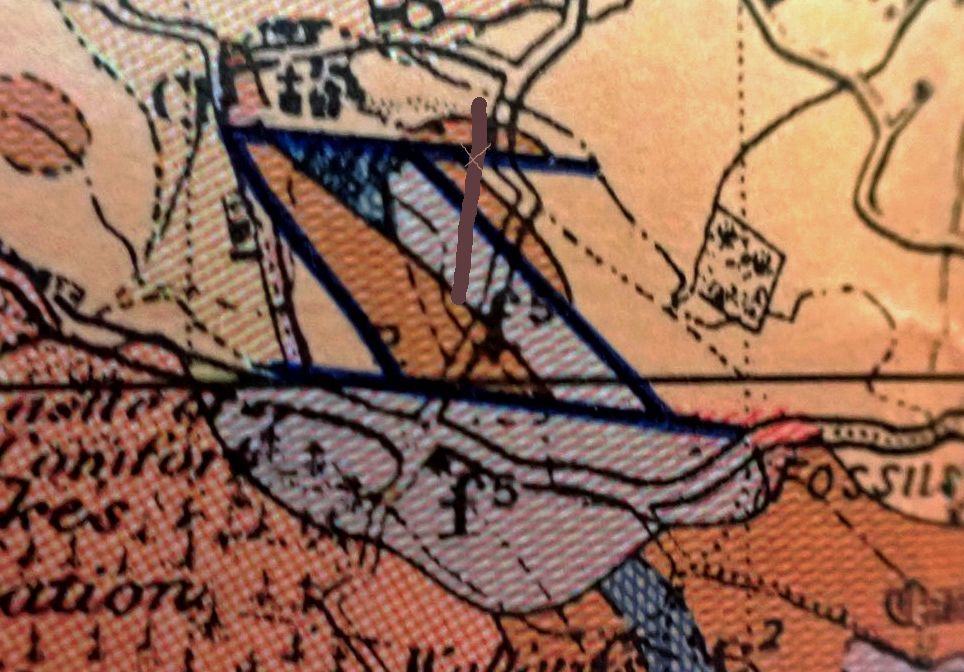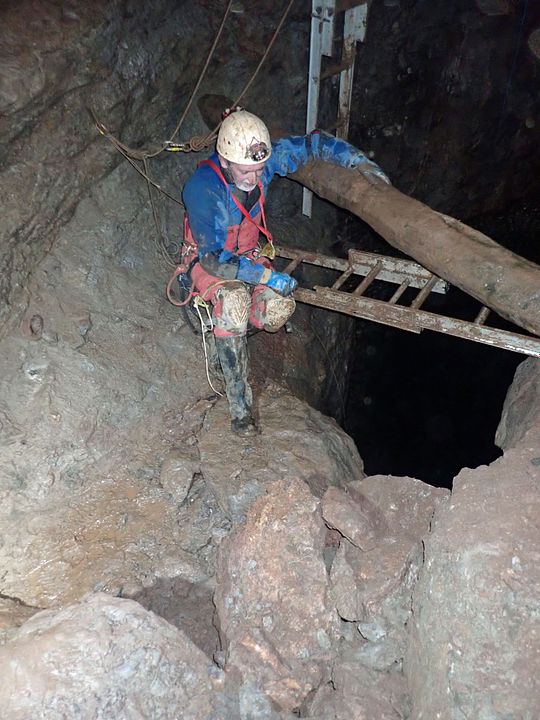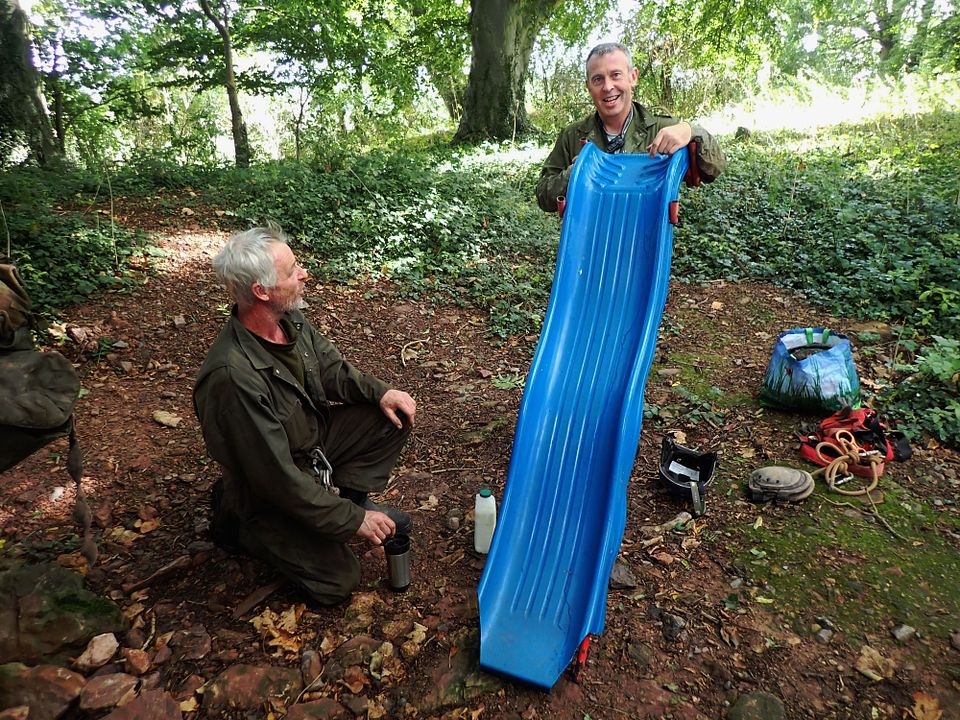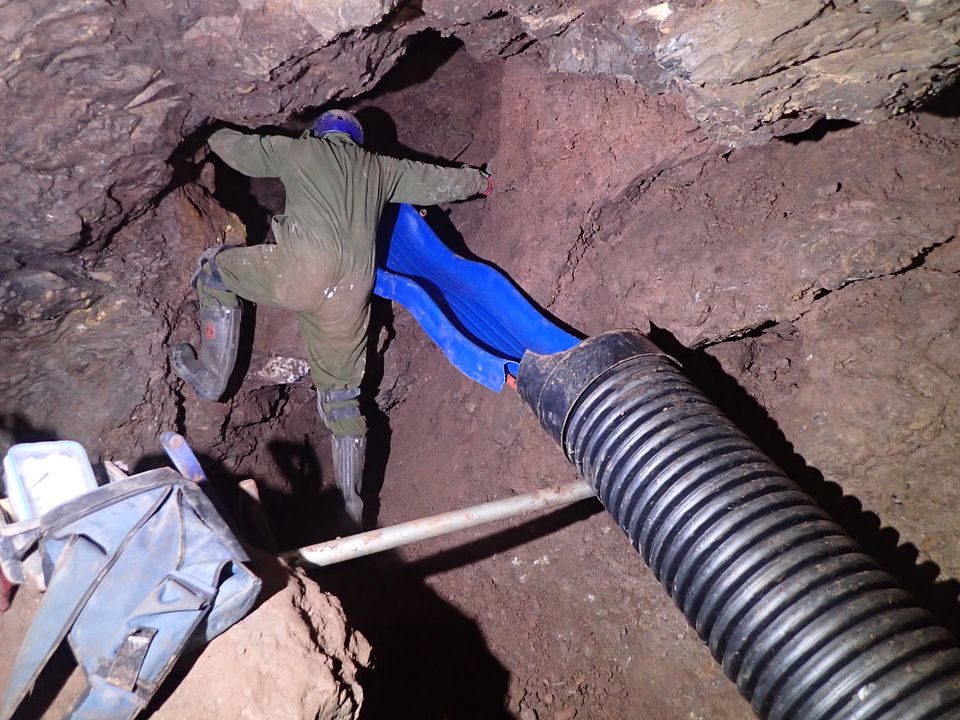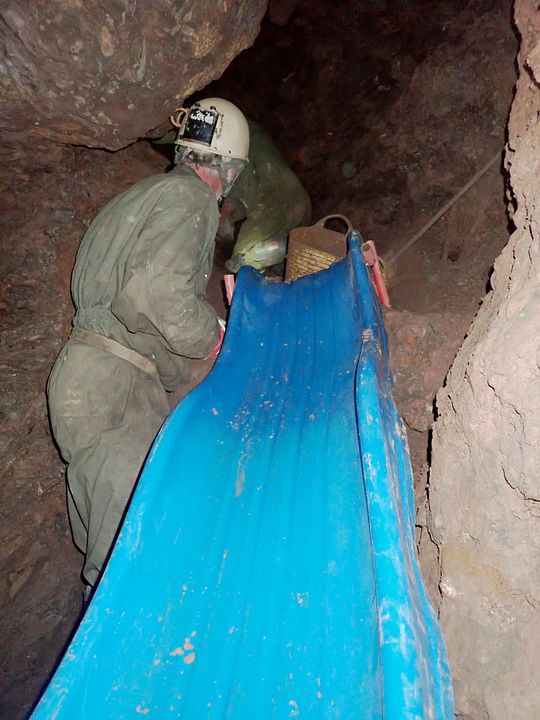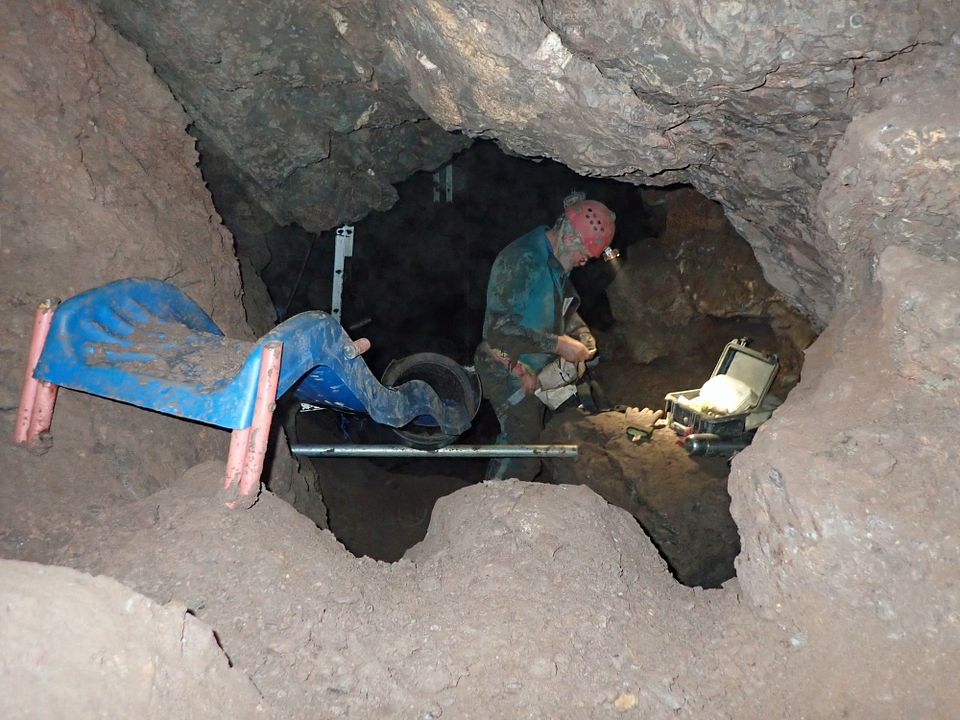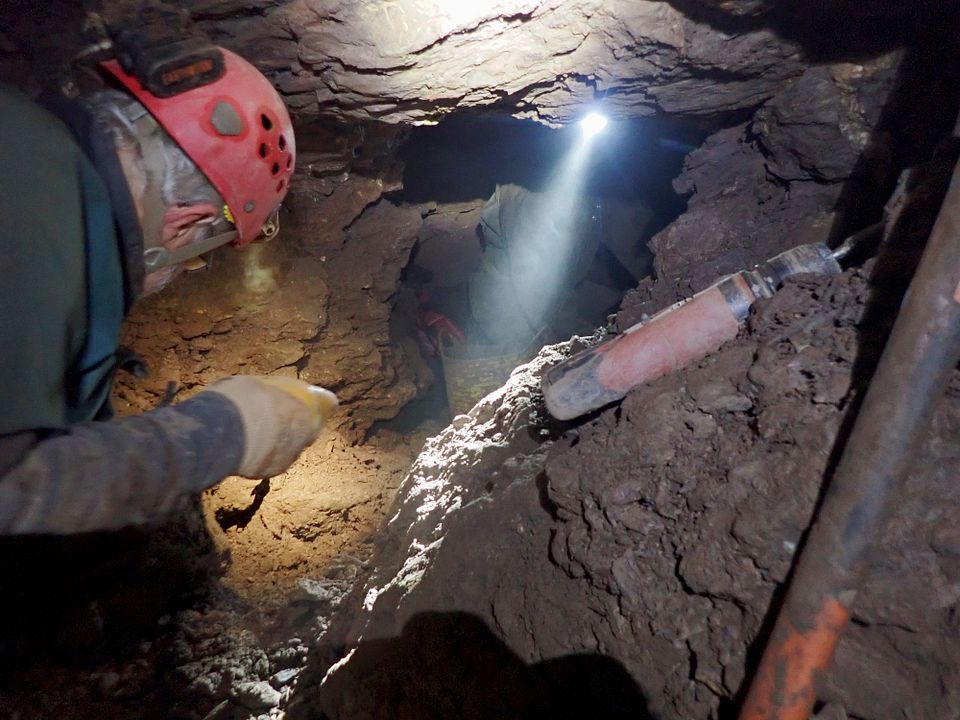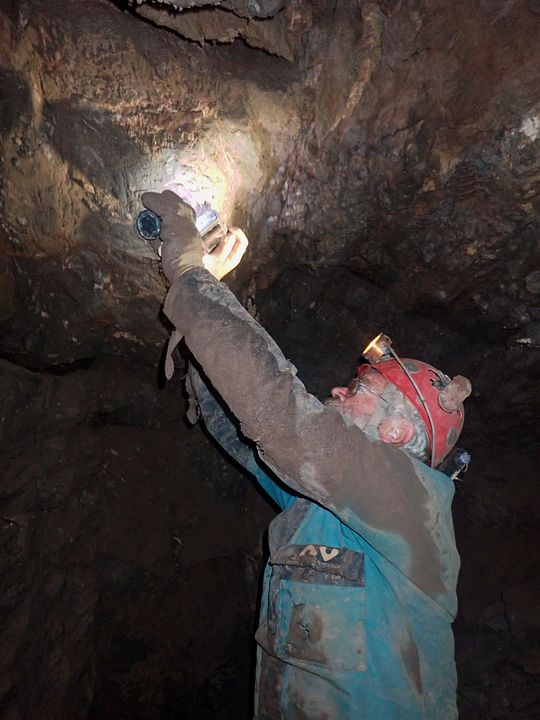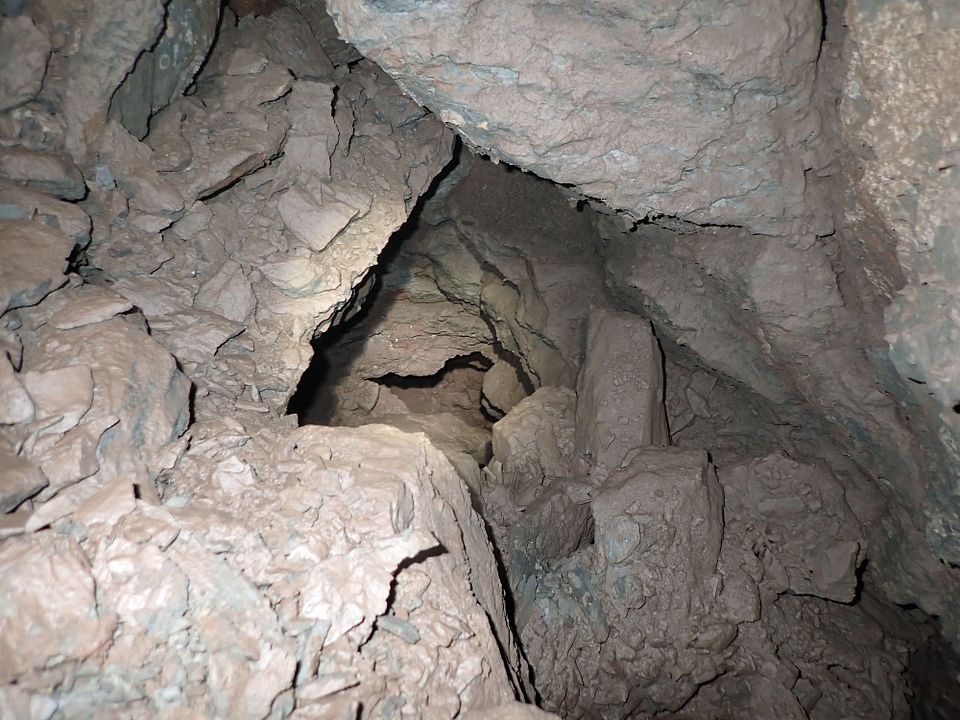You are using an out of date browser. It may not display this or other websites correctly.
You should upgrade or use an alternative browser.
You should upgrade or use an alternative browser.
The Mine Shafts Project. Hydrology.
- Thread starter The Old Ruminator
- Start date
The Old Ruminator
Well-known member
The Old Ruminator
Well-known member
The Old Ruminator
Well-known member
Trying to get solid pin placements for the deck bearers.

Mike gets the top fixed ladder on but I shall go back on my own and change it.
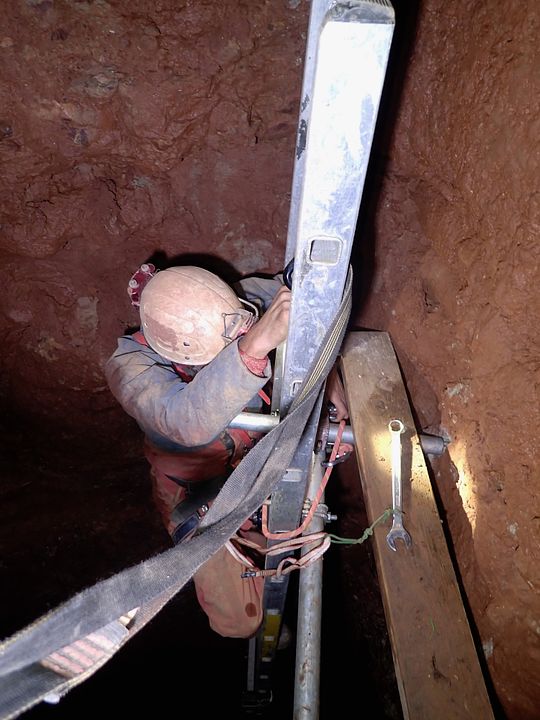
I get a better drop to a ledge this way. Note the drilled fixing clamp. All a fuss. Never use an SDS drill on hammer with the chuck converter in. It ruddy well disintigrates .


Mike gets the top fixed ladder on but I shall go back on my own and change it.

I get a better drop to a ledge this way. Note the drilled fixing clamp. All a fuss. Never use an SDS drill on hammer with the chuck converter in. It ruddy well disintigrates .

The Old Ruminator
Well-known member
The Old Ruminator
Well-known member
It hammered down yesterday with floods in the west. Local river up. I shall pack my kit and go in any case if only to continue with the level monitering. Will interject a catch up here in the chronology just to keep you in touch.
The Old Ruminator
Well-known member
Mike and I are "The Friday Nighters." Most digging happens on a Tuesday with "The Tuesday Diggers". Mike gets two sections in with a third to follow. I dropped my tool bag but its mostly spares.
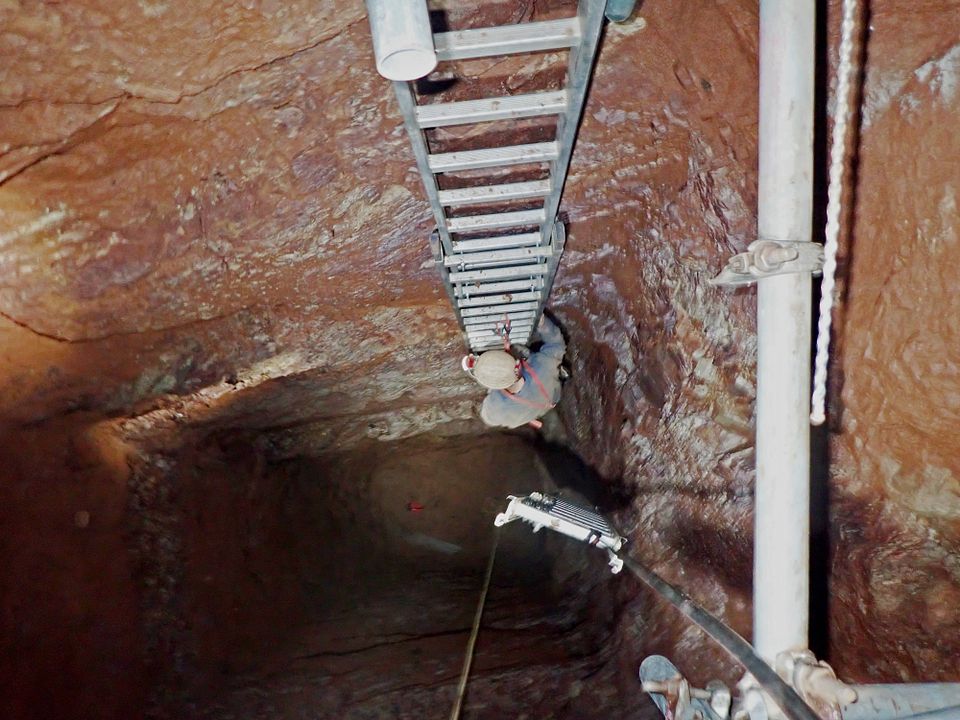
It had to be exact to touch the ledge. Mike starts platform two.

Oh it looks simple but it was ruddy awkward.
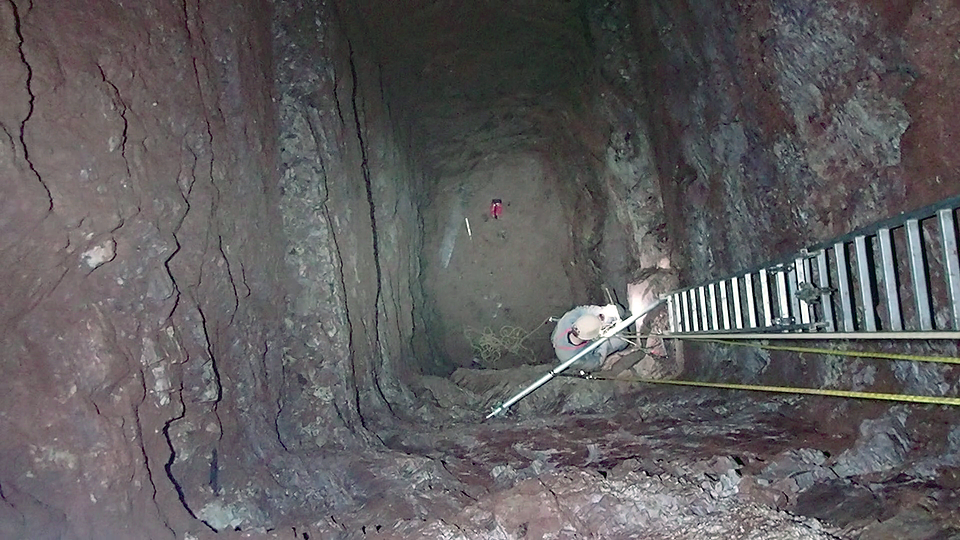
The complete run in place.

Bottom brackets in. These stop it swinging as the whole lot will hang as one piece.
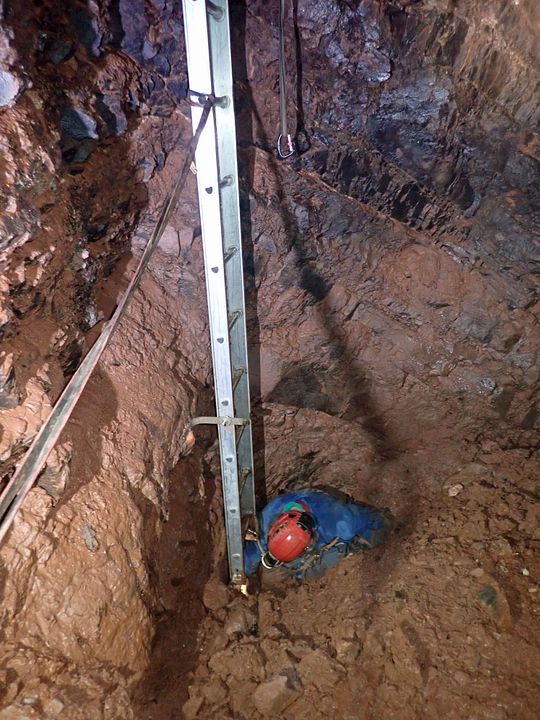
Meanwhile The Alcove dig goes forward.

It had to be exact to touch the ledge. Mike starts platform two.

Oh it looks simple but it was ruddy awkward.

The complete run in place.

Bottom brackets in. These stop it swinging as the whole lot will hang as one piece.

Meanwhile The Alcove dig goes forward.
The Old Ruminator
Well-known member
The Old Ruminator
Well-known member
Frantic messages in October 2022. The five cubic metres we dug from the end of the adit has arrived at the surface. This in a very embarrasing place. We wonder what to do but start by adding scrap to contain the collapse. Looking at the back wall we see rocks that might have been used as infill in the past. There has been a change in geology with a fault marked here. Certainly the miners had to bring in a lot of timber at some point in the drive south. For us its a disaster and goodness knows how much it will cost to put it all riight. Somebody comes up with a plan though. I wonder who and it wont cost a penny.
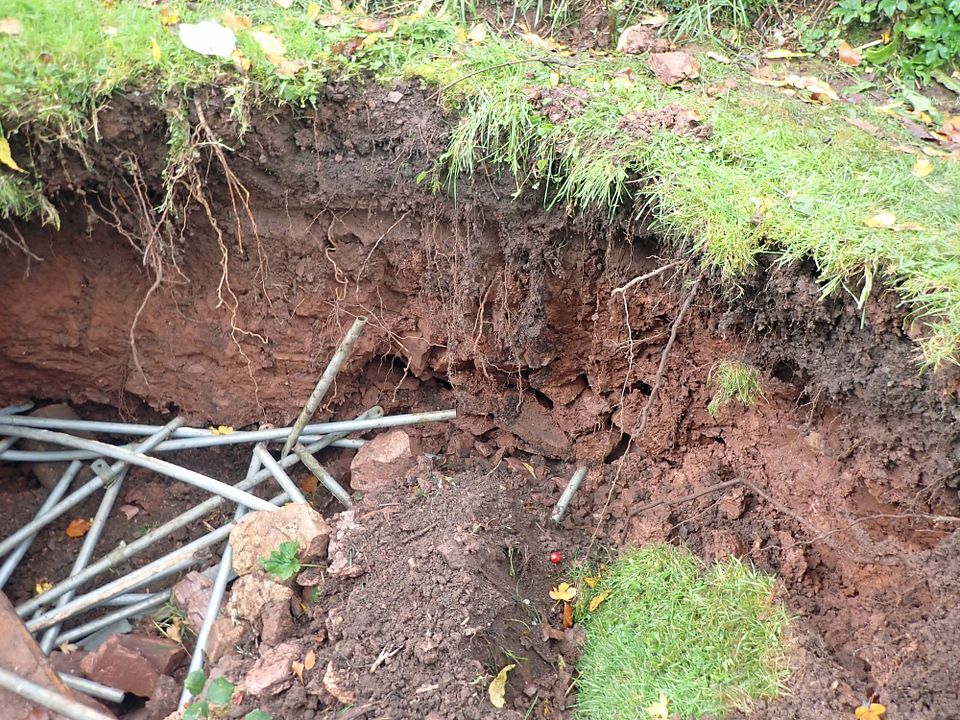

The Old Ruminator
Well-known member
The Old Ruminator
Well-known member
Going South Next. And the solution to the collapse.
The Old Ruminator
Well-known member
The Old Ruminator
Well-known member
I fancied having the errant beam in my garden but the group would not agree. Anyway back to the adit collapse. As luck would have it a man in my street was knocking down an extension. I asked for the blocks and bricks and he said OK. The blocks were light insulation blocks so I could stuff the car with them. Others helped too. Cost zero and now the hole has been grassed over and looks as before. The adit lurks beneath though ---
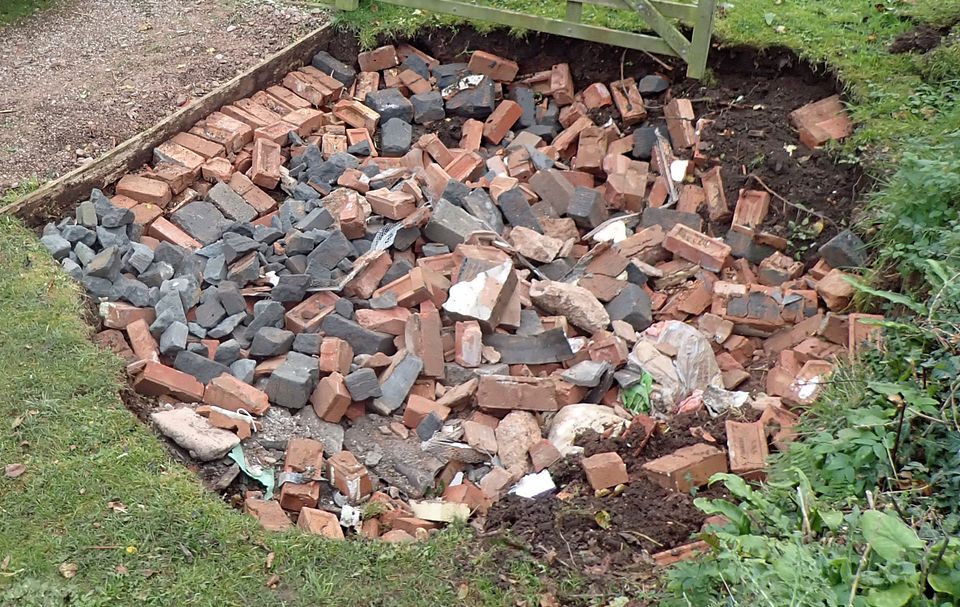
Stopped by the adit portal in the lane yesterday. You would hardly notice it was there. The water goes under the road to a drain.
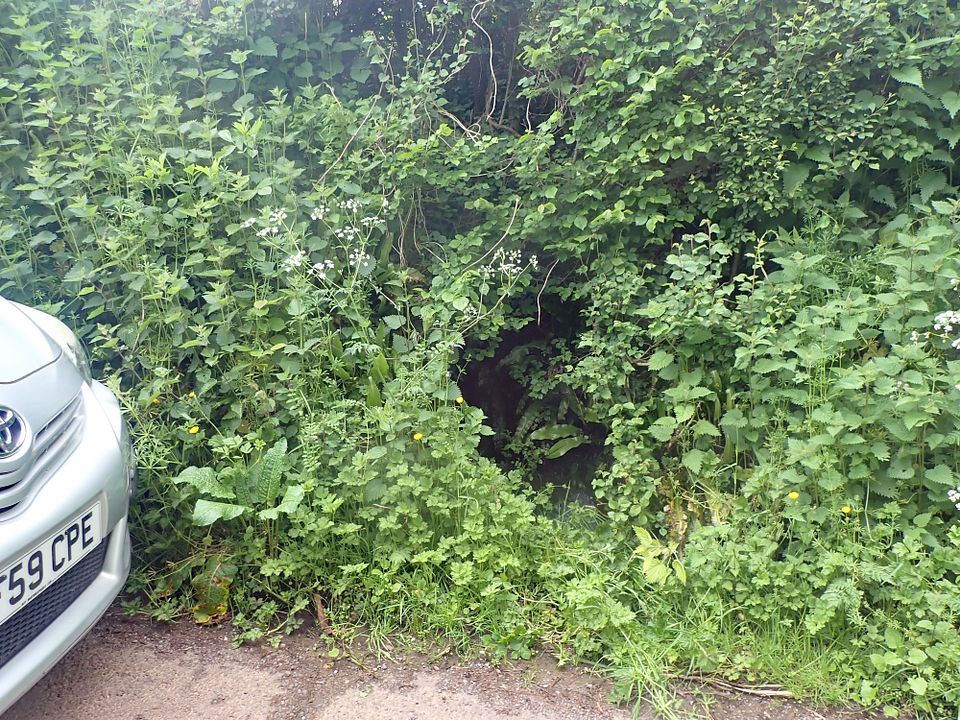
Just noticed that I have 25,000 photos on Photobucket. Is that what you might call prolific. ( or obsessive ? ).
A collage of the present dig etc. Will get back to the run later.
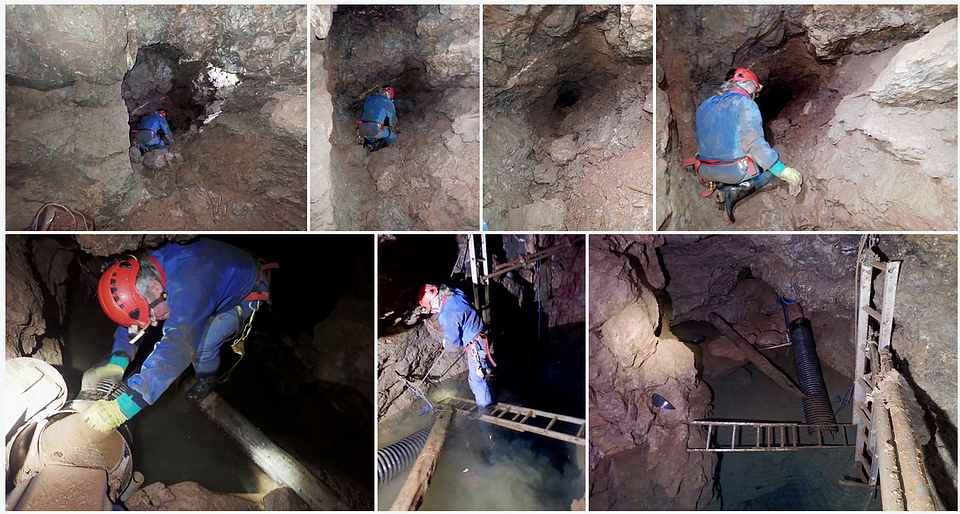

Stopped by the adit portal in the lane yesterday. You would hardly notice it was there. The water goes under the road to a drain.

Just noticed that I have 25,000 photos on Photobucket. Is that what you might call prolific. ( or obsessive ? ).
A collage of the present dig etc. Will get back to the run later.

The Old Ruminator
Well-known member
The Old Ruminator
Well-known member
The Old Ruminator
Well-known member
Peter Glanvill follows me into the new chamber. Its the first undiscovered natural void we have found here in two years. This August 2022. Its an indication that voids in this area can exist and are most likely to be remote from each other. Clearly what we call hypogenic or in Brians term from contact metamorphism the latter more relating to the non void debris areas in the limestone. Here rising thermal water has changed solid rock into mud and slabs. At the top of this activity the water reaches an area where it becomes more chemically aggressive. This I have called The Preferential Horizon. It relates to the rock structure and the water table. The thermal water reaches an area of recharge from surface water and possibly pre existing voids in the rock. The barite lode plays a part in the process here as its closely related to the cavern forming process and the deposition of the fluvial copper in the spar. Little is yet known about UK hypogenic speleogenises and its an area worthy of study. There are papers on line regarding that in Europe and America. Sadly most such caverns wont be apparent on the surface. They will have been encountered during quarrying and mining. The size and extent of caves formed this way is remarkable if you look at Lechuaguilla. Thinking UK I could suggest Holwell Cavern, Pen Park Hole, Lamb Leer . I could also suggest Pridhamsleigh Cavern and Bakers Pit in Devon. Mostly all thought as solutional cavities but its far more complex than that and can run into a transitional stage where a hypogenic cave can be epigenic. Certainly some will have small mis fit streams as does Holwell Cavern which in plan clearly displays the passage pattern in relationship to the geology. The large cavern and shaft at Cannington in Somerset are hypogenic. The former destroyed and the latter associated with a barite lode which was mined on the surface there.


The Old Ruminator
Well-known member
The removal of tons of fill has brought us back to the barite lode. We called the new chamber Hernia Chamber for undislosed reasons here but quite glad to let that drop. There are holes in the floor and a couple of large boulders. The hypogenic filled area continues SE with little airspace.
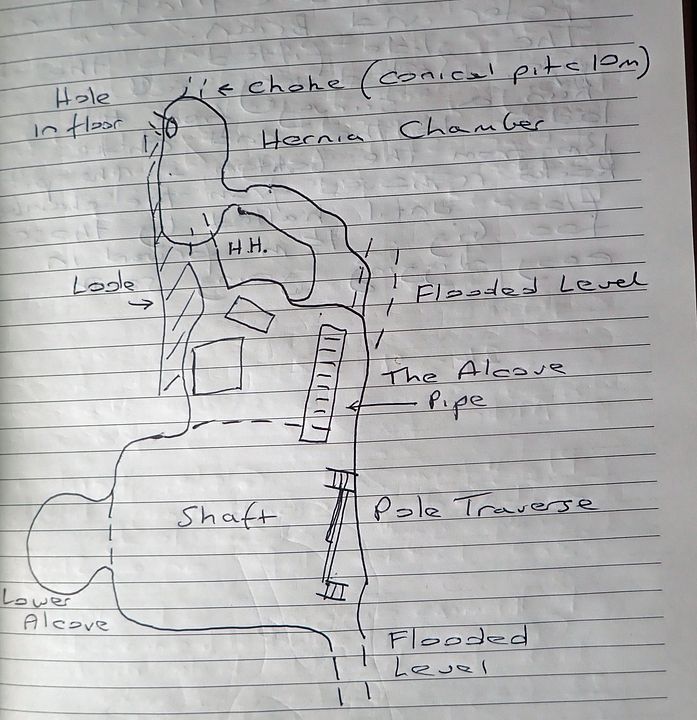
Here you can see the contact metamorphism as a large choke with a tiny airspace at the preferential horizon.
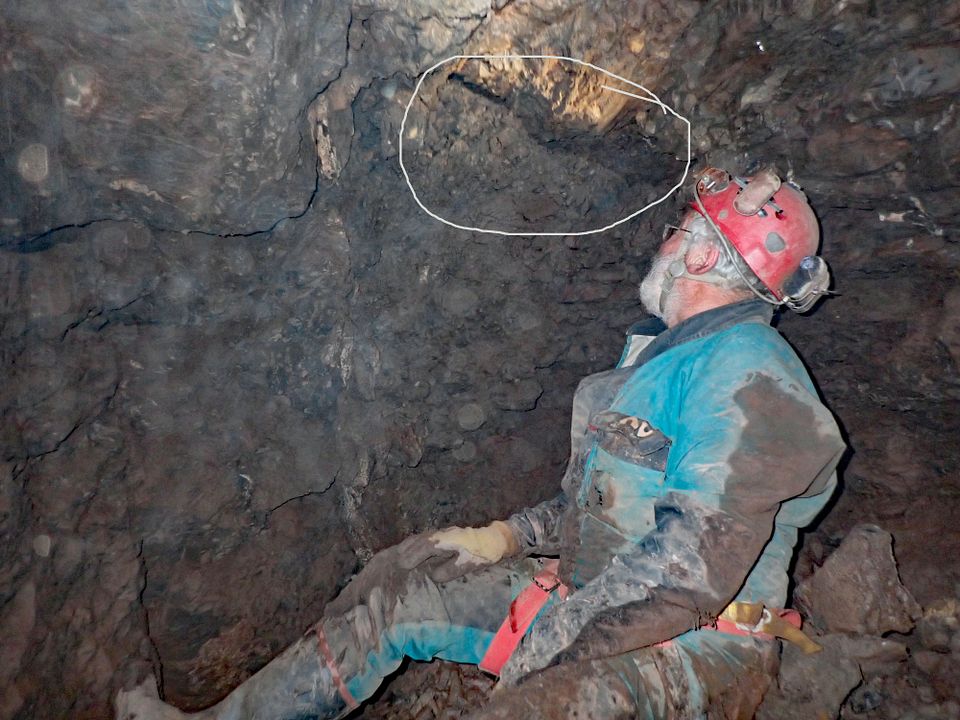
The barite wall left and hole following it down.
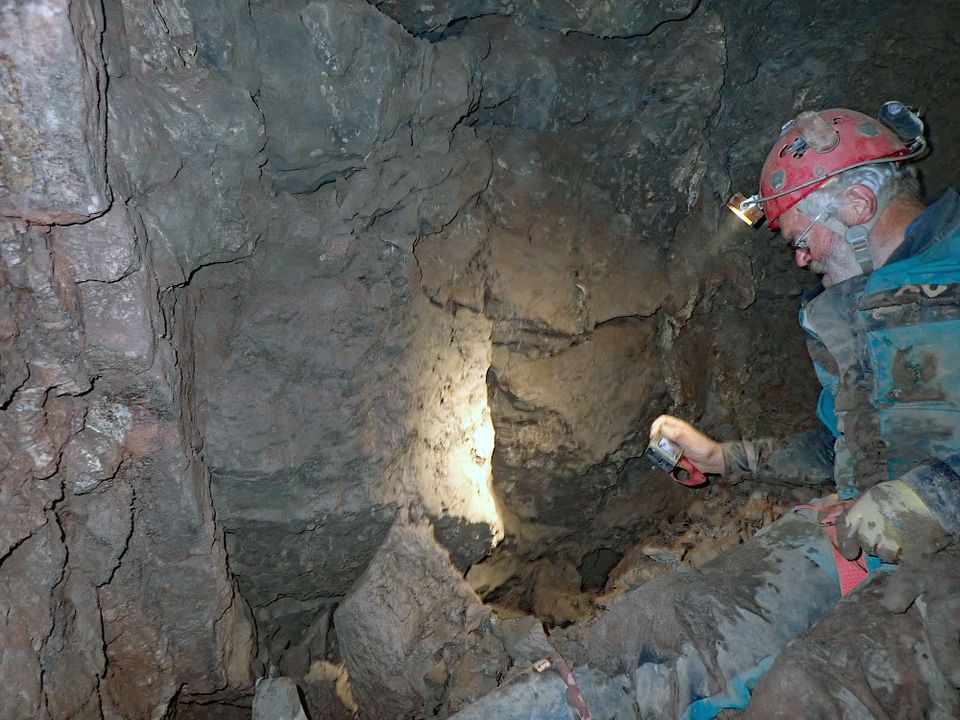

Here you can see the contact metamorphism as a large choke with a tiny airspace at the preferential horizon.

The barite wall left and hole following it down.

The Old Ruminator
Well-known member
The Old Ruminator
Well-known member
Andy Farrant
Active member
Pridhamsleigh is certainly hypogenic, Holwell probably is, and Baker's Pit may well have hypogenic elements, but also modification due to sediment input (paragenesis) and epigenic cave development. There are lots of other hypogenic caves in the UK, notably the Pennine maze caves, the Derbyshire vein cavities and similar cavities in North Wales, the Yorkshire 'guelphs', Pen Park Hole & some of the isolated chambers in west Mendip (Denny's Hole and sites on Axbridge Hill), and others. There is active research into hypogene speleogenesis in the UK, and Alexander Klimchouck from Ukraine is currently seconded to Manchester University. Do you have any calcite mineralisation (large calcite crystals) in the voids like in Pen Park Hole? I hope that you guys will write up the exploration and speleogenesis of your site for Cave & Karst Science; you have clearly made many good observations, - and photos. Keep up the good work...



